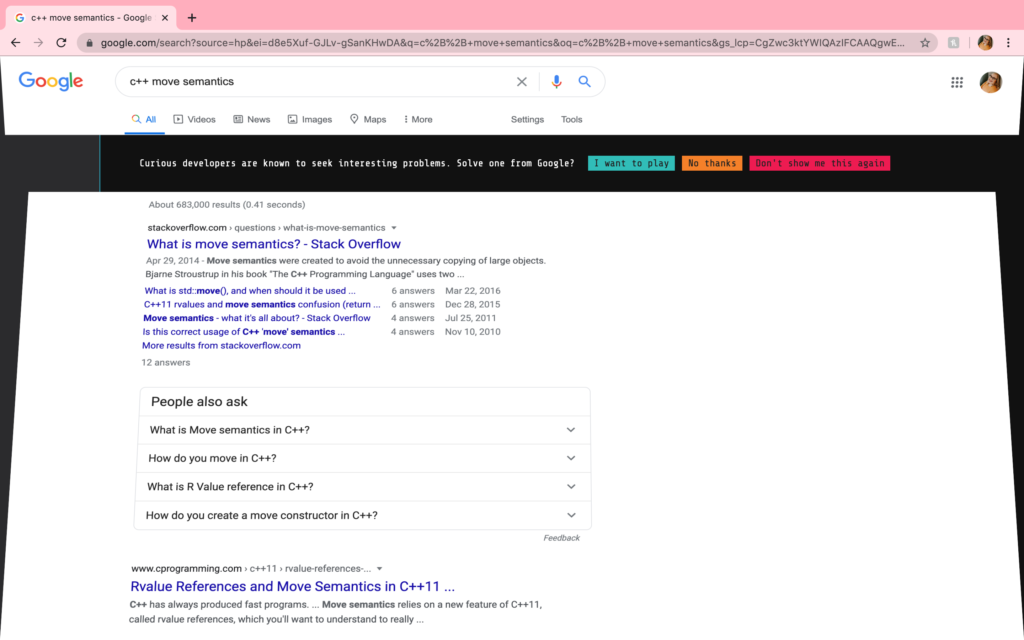As I was scrolling on the app TikTok, for what may or may not have been the third time today, a particular video caught my attention. The opening line of the video was,
This is how you get a job at Google, using Google Foobar, their secret hiring challenge.
– @thomaspwang on TikTok
Instantly, I was hooked. However, there were a few questions running through my mind: What is Google Foobar? What is the challenge? Do they actually hire people this way?
The video continued on to show how you can access Google Foobar. You begin by simply searching “c++ move semantics” in Chrome. After about 30 seconds (give or take), a bar should appear at the top of your window that says, “Curious developers are known to seek interesting problems. Solve one from Google?” You are also given three options involving how you want to proceed – “I want to play”, “No thanks”, or “Don’t show me this again”. For reference, this is what my window looked like after following these steps.

Before continuing on, I wanted to do some more background research about the challenge and whether or not players were actually employed after completing it.
Quickly, I learned that Google typically only gives out the challenge invitation to special developers… and I am not a developer by any means (thanks for the hack, TikTok!). Google finds these developers by watching their search history for programming-related words and problems. If the user decides that they want to proceed, selecting “I want to play” causes a command line like interface to appear in a new tab. After typing the command “request” to get started, you will receive coding/programming questions in your Foobar command line folder that you must solve. You are able to answer these questions and submit your solutions in either JAVA or Python (whichever you prefer). I will spare the details of each level, but there are five levels that the player must complete successfully in order to complete the Foobar challenge overall.
Upon completing the Google Foobar challenge, you are asked for contact details, and will receive an invitation for an interview. If you pass the interview, congrats! You are now (most likely) a Google employee. So yes, people often are hired from this challenge. As I mentioned before, this is because those who partake in the Foobar challenge are usually directly invited by Google. Therefore, if you are just the average person like myself using a roundabout way to access it, you probably will not see yourself in the Googleplex any time soon. But it’s worth a shot!
All in all, I would still love to try the Google Foobar challenge someday, but I am nowhere near ready to (yet). Although, who knows – maybe I could hone the Python skills I learned in ENGL 340 in the future and become Google’s newest employee.
